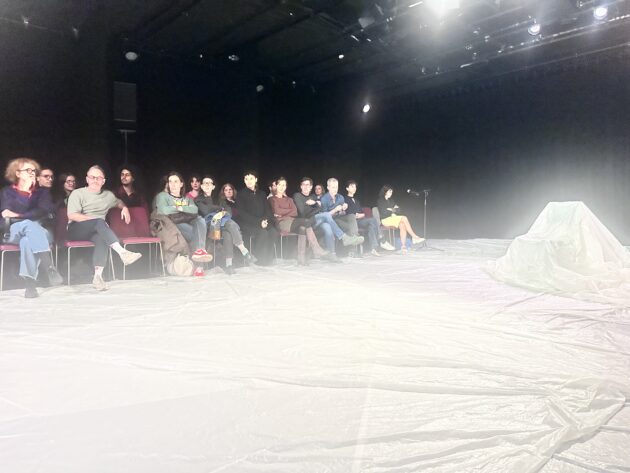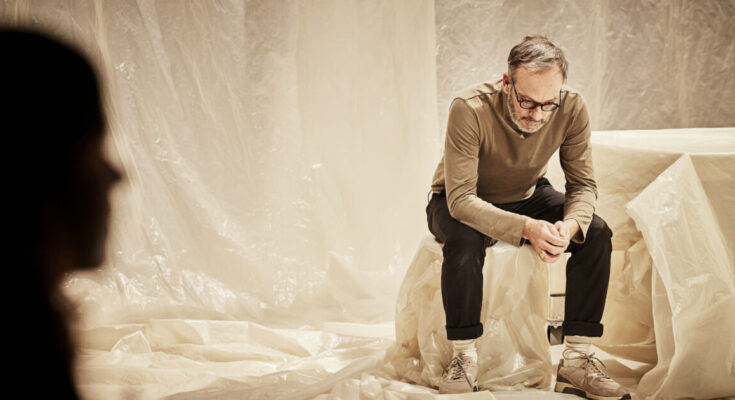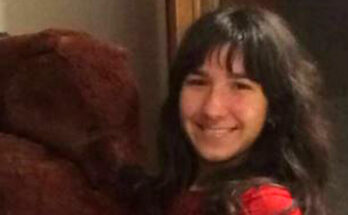The spectator seats are arranged in a horseshoe shape. The actors sat scattered in the crowd. In the center, white nylon sheets cover the floor, clashing with the black backdrop. It is a “linear and rectangular” place where one can seek peace. “It took us a long time to find ourselves here, in the right place, at the right time,” begins the first voiceover “Consolation” (literally “Comforters”). Entertainment is not the right word, ceremony maybe it’s getting closer. This was inspired by the testimonies of survivors November 13 attacks in Paris: has been touring halls and theaters for several months and this commemorative week will be staged for the victims’ association. “How to build a peaceful place in the heart of the city?“, was the first question that resonated. The aim was to create a courtroom: a closed space where freedom of speech exists. “And where there is a black hole. Believe and let’s dive in together”. So begins a whirlpool of voices, stories, lives. The earthquake of souls facing the unspeakable, alone or together. Often in groups. But still not quite in communities. Yet, everyone is touched by the massacre that in one night sees death 130 people. And the wounds, for those who remain, never heal.
After ten years, the time has come to listen to those voices and face them together. Take them out of the courtroom and onto the theater stage so everyone can hear them. The audience at the Theater de la Concorde in Paris looked at each other: “They were there to bear witness to each other, just like that night”, says the director and writer Pauline Susini. There was a woman with curly hair accompanied by her friend: the first silently took a handkerchief from the bag, both listened to each other crying, but never looked at each other’s faces. Beside her, a daughter holds her mother’s hand: she wants to be a support tonight and stares at the floor as the pain gets worse. In front, a woman with her hair pulled back clings to a man’s arm. They were getting closer and closer, while behind them two twenty year olds were hugging each other tightly. They almost melt as time goes by. Many are loners. Everyone struggles with emotions. Every once in a while, someone would jump up and quickly wipe his cheek.
“The Comforters” spoke to them: which is anonymous who experienced the 2015 attacks as victims, but also as friends of the victims or ordinary residents of the war-torn city. In the darkness of the theater, all their experiences have value. They all finally found their place. This pain is so fresh that it feels like less than ten years have passed: because to resolve it, to find solace, it needs to be shared. “Each scene was inspired by a phrase I heard in a collection of testimonies from the Institute for Contemporary History,” explained Susini. “After listening to it for days, I hit a wall. All this terror passed through mefrom this trauma. I can’t write. Then I read ancient Greek myths and went from there. They helped me keep my distance and tell it.” So he managed to bring the unspeakable thing to the stage. There was the sixteen-year-old who was in the front row at the Bataclan and who in his escape made the mistake of looking back (“Just like Euridice”; said Susini): the hole in the audience stuck to the floor hoping to drown haunted him every day. And from that day on we can feel between life and death. There are survivors fighting to be recognized by the Terrorism Victims Fund: scar examination This is done every year by a team of doctors and any reduction in the length of the streak will reduce the compensation. And the torture repeated itself. The voices calling for “forward” are increasing, while everything is dragging us back. Or the desperate request to experience grief in a different way: the mother who wants to tell the story of her missing son in court “otherwise it would be as if he had never been there”, the father who begs him not to include him in the story. But he was already in it. And then the man was hospitalized in extreme conditions and regained contact with life when one of the nurses gave him shampoo. He was bald, but that everyday attitude brought him back to reality.
The performance or ritual is fast-paced because the sounds and characters follow each other in a chain. It’s not just the painbut also people’s laughter and mood swings hanging by a thread: aggression, nostalgia, passion, and embarrassment. The ghosts of people who are no longer with us are still alive and often colorful. Like the girl who reappears on the day of her funeral dressed as a queen and invites her friends back to the ceremony. It’s all wrong, it doesn’t represent him. The unreasonable anger of those who weren’t present clashed with the disbelief and relief of those who sought unthinkable ways to remember him. Then hero doctor who doesn’t want to be, psychologist who embraces the patient with a hug that he cannot give in reality. In the end it is the lost lover, sprinkled with sequins, who says goodbye to his partner and allows him to move on. And her sparkling dance brings relief to the listener. Lights out and stayed like that for endless minutes. The room felt all the emotions together in a real catharsis.
“By giving these people a chance, it’s as if they’re right here in front of us,” explains the actor Sébastien Desjours. “There is a distance. But at the same time we are in the audience, we feel the people and we have to find the right way to be there. We are right in the intimacy with those who come. This represents well what this story means” for all of us. “The theme is very heavy,” concluded the director plums“that there is a bond between us that I have rarely felt so strongly in a project, never leaves us. Actors must be able to accompany the audience on a non-violent and non-painful journey”. And who is the “comforter” in the end? “The answer is all of us, together. Entertaining community“. Meanwhile, the lights in the room came back on after the seemingly endless darkness. Faces looked around with deep complicity. The ritual was complete, something had changed.




